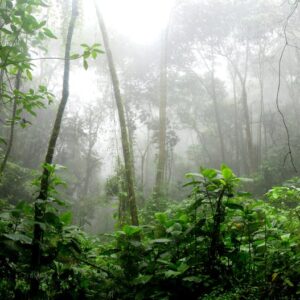UK Court Holds BHP Liable for Brazilian Dam Disaster, Indigenous Communities Face Amazon Mining Threat — Today’s Environmental Briefing for Sun, Nov 16 2025

Across the stories today, a common thread emerges: the growing disconnect between the urgency of climate action and the pace of institutional response — and how communities are stepping into that gap with both protest and innovation.
In Belém, Brazil, where COP30 delegates from nearly 200 nations gather for what many consider the world’s most critical climate negotiations, frustration is spilling into the streets. Indigenous protesters broke through security barriers this week, demanding a real voice in Amazon protection decisions that affect their ancestral lands. Their message cuts to the heart of a deeper tension: current plans to save the rainforest are being made without meaningful input from the people who know it best. Meanwhile, coordinated protests from Glasgow to Brazil signal that civil society isn’t waiting for diplomatic breakthroughs — they’re demanding them.
The day’s coverage points to growing momentum around accountability, both legal and moral. Nearly a decade after Brazil’s catastrophic dam collapse killed 19 people and devastated ecosystems, a British court ruled that mining giant BHP bears responsibility — potentially opening the door for $47 billion in damages. It’s a landmark decision that could reshape how multinational corporations answer for environmental disasters, particularly in the Global South where extraction often happens far from corporate headquarters.
Yet even as some battles are won in courtrooms, new threats are accelerating on the ground. In Colombia’s Amazon, Indigenous communities face fresh pressure from copper mining — driven not by traditional gold rushes, but by the global demand for materials needed for clean energy infrastructure. The irony is stark: the minerals required to build our renewable future may destroy some of the world’s most biodiverse ecosystems. Meanwhile, in drought-stricken Querétaro, Mexico, 32 new data centers are planned despite the region experiencing its worst water crisis in a century.
Behind the numbers are real communities adapting in real time. Douglas Dill’s father-son outing to watch college football in Alabama turned into a medical emergency as rising temperatures made even recreational activities dangerous in the American South. It’s a reminder that climate change isn’t just reshaping polar ice caps — it’s changing how we live, work, and play in places we thought were safe.
Innovation, however, is emerging from unexpected corners. Researchers are dusting off 1980s experiments in underground hot water storage, finding that simple technologies might help solve today’s clean energy challenges. In Los Angeles, escaped parrots have created thriving urban populations that are actually helping conservation efforts for their wild cousins. Even Melbourne’s skyscrapers are becoming nesting grounds for peregrine falcons, showing how cities and wildlife can coexist.
Australia’s political landscape reveals the deeper challenge of translating environmental urgency into policy. The opposition Coalition abandoned its net zero commitments, choosing to prioritize electricity prices over emissions cuts — despite mounting evidence that climate action drives economic growth. It reflects how fossil fuel interests continue shaping public opinion, even when the economic data tells a different story.
As COP30 unfolds this week, all eyes will be on whether diplomatic negotiations can match the pace of both environmental breakdown and grassroots innovation. The protesters storming the summit halls aren’t just expressing frustration — they’re highlighting that the communities most affected by climate change are also the ones with the most to offer in solutions. The question isn’t whether change is coming, but whether it will arrive through careful planning or continued crisis.







